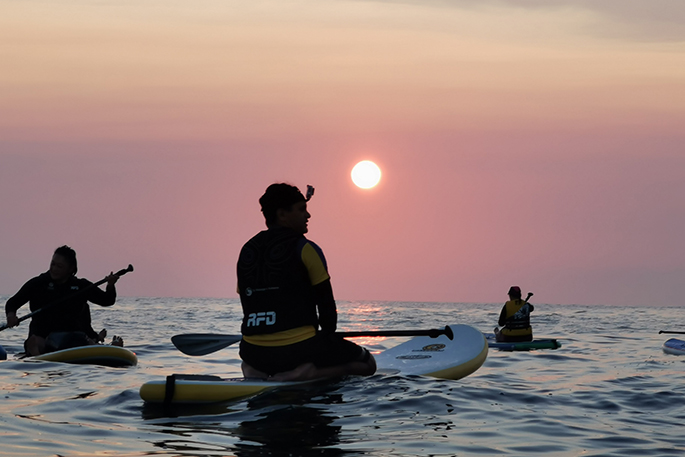Stand-up paddleboarding - or 'SUP' - is a wonderful summertime activity and Surf Life Saving New Zealand - SLSNZ is keen to ensure Kiwis can enjoy it safely this summer.
As part of the charity's ‘Ready. Set. Summer' campaign, SLSNZ is teaming up with water safety experts across a range of popular beach activities to share vital safety messages.
'Our number one priority is ensuring that Kiwis make it home safe after a day at the beach,” says SLSNZ Chief Executive, Paul Dalton.
'Volunteer Surf Lifeguards conduct hundreds of rescues every year – and many of these involve people who are participating in activities such as surfing, SUPing, or sea kayaking,” says Paul.
'We understand the importance of safety messaging because our volunteers are at the coalface and we see what happens when things go wrong.
'In order to prevent these scary – and sometimes tragic – incidents from happening this summer, we're teaming up with organisations like NZSUP to share safety information that's relevant to Kiwis who enjoy water-based activities,” says Paul.
NZSUP Safety Officer, Bill Dawes says that while it can seem safe and easy, stand-up paddle boarding is like any water sport in terms of risk.
'There is the potential for things to go wrong, especially here in New Zealand where the weather can often change rapidly,” says Bill.
Bill says all paddlers, from beginners to experienced, should follow the SUP SAFE code when they head out. Paddlers should wear a leash every time they paddle, but it needs to be the right sort for the conditions.
'Without a leash, it's really easy to become separated from your board, especially in a breeze. This is the main cause of paddleboarding rescues and drownings worldwide. However, it's equally important to wear the right leash for the conditions. Find out more about this at www.supsafe.nz.”
Bill also says paddlers should always wear a life jacket.
'It's a safety device in case the rider gets separated from their board and it's a legal requirement. It does not need to be restrictive or uncomfortable, there are excellent inflatable PFDs (personal flotation devices) designed for the experienced paddler that you don't even know you're wearing.”
Before heading to the beach, Bill recommends that paddlers check:
- The weather forecast
- Wind strength and direction (now and forecast)
- Tide height and flow if they are on the coast, and swell conditions
- Water temperature.
'Every time you go out, ask yourself; is my ability, equipment and clothing right for the conditions?”
He says paddlers should carry at least one form of waterproof communication that will allow them to call for help if they, or someone else, get into trouble. A phone or Maritime VHF radio (with emergency channel 16) in a waterproof case is great. Carry a whistle on your PFD too; it's a great way of getting attention.
Even if you're paddling with others – which is always safest – Dawes says you should ensure someone on shore knows you're on the water, where you're going, how long you'll be and when you've arrived back. The Coastguard's app Log A Trip is great for this.
Surf Life Saving New Zealand's National Coastal Safety Manager, Dr Mick Kearney, says NZSUP are experts when it comes to SUP use and following their advice is key to a safe paddle.
New paddlers should also paddle along the coastline, not towards the horizon, so they are closer to help should trouble strike. The most common problem for paddlers is getting blown out to sea. So avoid offshore winds whenever possible, and don't put yourself in potential danger by paddling too far offshore.
Dr Kearney says anyone who does get blown out to sea on an inflatable SUP should stay with their board and wave their paddle to signal for help if they are close to shore.



0 comments
Leave a Comment
You must be logged in to make a comment.